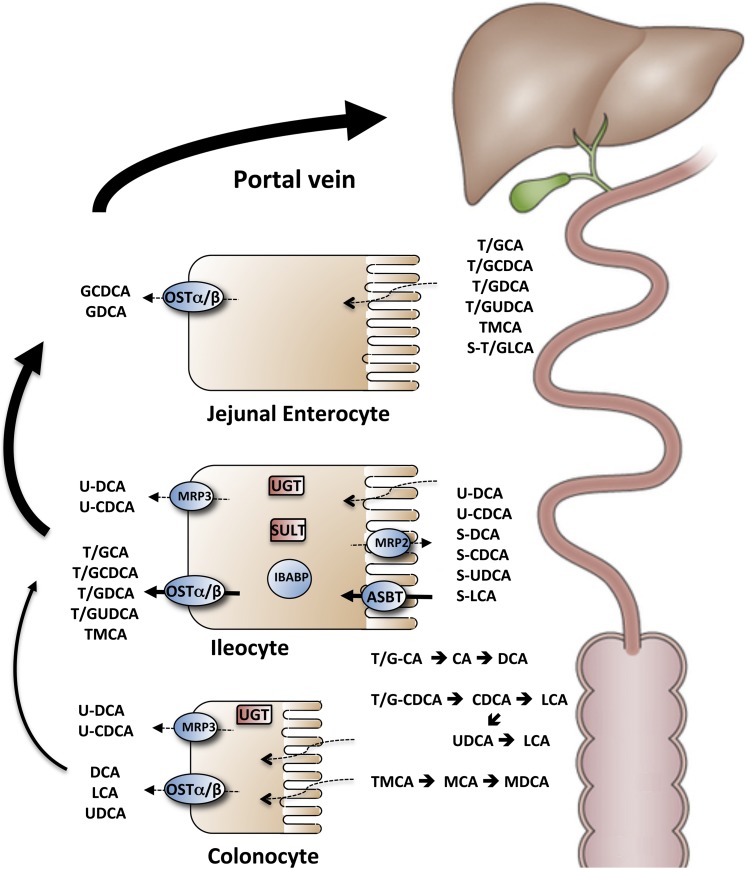Fig. 1.
Schematic of intestinal transport and metabolism of bile acids. The taurine (T) and glycine (G) conjugated and sulfated (S) primary and secondary bile acids are secreted into bile, stored in the gallbladder, and empty into the small intestine in response to a meal. Bile acids encounter high concentrations of the gut microbiota in the distal ileum and colon and undergo a variety of bacterial transformations including deconjugation, dehydroxylation, and epimerization (black arrows). Passive uptake (dotted lines) occurs down the length of the small intestine for the protonated uncharged fraction of glycine conjugated bile acids and any unconjugated bile acids that are formed. OSTα-OSTβ may participate in the export of those bile acids across the enterocyte or colonocyte basolateral membrane. In the ileum, active uptake of conjugated bile acids across the apical brush border membrane is mediated by the ASBT. The bile acids interact in the cytosol with IBABP, and then are exported across the basolateral membrane by the OSTα-OSTβ. Unconjugated dihydroxy bile acids that are passively absorbed in the distal ileum and colon can be glucuronidated (U) by UGT and exported across the apical membrane by MRP2 or ABCG2 or across the basolateral membrane by MRP3. A fraction of the bile acids taken up in the distal small intestine may also be sulfated by the SULT2A1 and exported back across the apical brush border membrane by MRP2 or ABCG2 for elimination. The bile acids absorbed from the intestine are carried back in the portal circulation to the liver for uptake and may undergo repair by the hepatocyte. Repair includes essentially complete reconjugation with taurine or glycine, reepimerization of iso (β-hydroxy) bile acids to their α-hydroxy form, reduction of oxo groups to hydroxyl groups, and rehydroxylation at the C-7 position to generate the original primary bile acid (in mice but not humans). Adapted with permission from (238).

